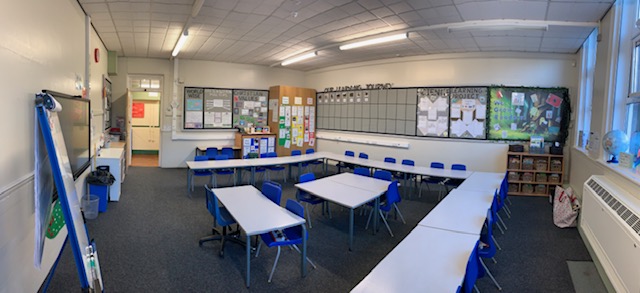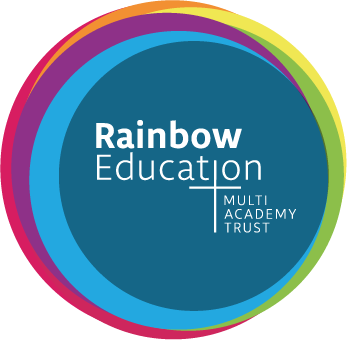
Welcome to Year 3/4A
Teacher: Mr Atkinson
Teaching Assistant: Miss Easton
End of Year Expectations for Year 3
The below provides information for parents and carers on the end of year expectations for children in our school. The National Curriculum outlines these expectations as being the minimum requirements your child must meet in order to ensure continued progress.
All the objectives will be worked on throughout the year and will be the focus of direct teaching. Any extra support you can provide in helping your children to achieve these is greatly valued.
If you have any queries regarding the content of this booklet or want support in knowing how best to help your child please talk to your child’s teacher.
Mathematics
- Compare & order numbers up to 1000.
- Read & write all numbers to 1000 in digits and words.
- Find 10 or 100 more/less than a given number.
- Count from 0 in multiples of 4, 8, 50 and 100.
- Recall & use multiplication & division facts for 3, 4, 8 tables.
- Recognise place value of any 3-digit number.
- Add and subtract:
- 3-digit nos and ones
- 3-digit nos and tens
- 3-digit nos and hundreds
- Add and subtract:
- Numbers with up to 3-digits using written columnar method.
- Estimate and use inverse to check.
- Multiply:
- 2-digit by 1-digit
- Count up/down in tenths.
- Compare and order fractions with same denominator.
- Add and subtract fractions with same denominator with whole.
- Tell time using 12 and 24 hour clocks; and using Roman numerals.
- Tell time to nearest minute.
- Know number of days in each month and number of seconds in a minute.
Writing
- Use conjunctions (when, so, before, after, while, because).
- Use adverbs (e.g. then, next, soon).
- Use prepositions (e.g. before, after, during, in, because of).
- Experiment with adjectives to create impact.
- Correctly use verbs in 1st, 2nd and 3rd
- Use perfect form of verbs to mark relationships of time and cause.
- Use inverted commas to punctuate direct speech.
- Group ideas into basic paragraphs.
- Write under headings and sub-headings.
- Write with increasing legibility, consistency and fluency.
Reading
- Comment on the way characters relate to one another.
- Know which words are essential in a sentence to retain meaning.
- Draw inferences such as inferring characters’ feelings, thoughts and motives from their actions.
- Recognise how commas are used to give more meaning.
- Recognise inverted commas
- Recognise:
- plurals
- pronouns and how used
- collective nouns
- adverbs
- Explain the difference that the precise choice of adjectives and verbs make.
End of Year Expectations for Year 4
This booklet provides information for parents and carers on the end of year expectations for children in our school. The National Curriculum outlines these expectations as being the minimum requirements your child must meet in order to ensure continued progress.
All the objectives will be worked on throughout the year and will be the focus of direct teaching. Any extra support you can provide in helping your children to achieve these is greatly valued.
If you have any queries regarding the content of this booklet or want support in knowing how best to help your child, please talk to your child’s teacher.
Mathematics
- Count backwards through zero to include negative numbers.
- Compare and order numbers beyond 1,000.
- Compare and order numbers with up to 2 decimal places.
- Read Roman numerals to 100.
- Find 1,000 more/less than a given number.
- Count in multiples of 6, 7, 9, 25 and 1000.
- Recall and use multiplication and division facts all tables to 12x12.
- Recognise PV of any 4-digit number.
- Round any number to the nearest 10, 100 or 1,000.
- Round decimals with 1dp to nearest whole number.
- Add and subtract numbers with up to 4-digits using written columnar method.
- Multiply:
- 2-digit by 1-digit
- 3-digit by 1-digit
- Count up/down in hundredths.
- Recognise and write equivalent fractions
- Add and subtract fractions with same denominator.
- Read, write and convert time between analogue and digital 12 and 24 hour clocks.
Writing
- Vary sentence structure, using different openers.
- Use adjectival phrases (e.g. biting cold wind).
- Use appropriate choice of noun or pronoun.
- Use fronted adverbials.
- Use apostrophe for plural possession.
- Use a comma after fronted adverbial (e.g. Later that day, I heard bad news.).
- Use commas to mark clauses.
- Use inverted commas and other punctuation to punctuate direct speech.
- Use paragraphs to organised ideas around a theme.
- Use connecting adverbs to link paragraphs.
- Write with increasing legibility, consistency and fluency.
Reading
- Give a personal point of view on a text.
- Re-explain a text with confidence.
- Justify inferences with evidence, predicting what might happen from details stated or implied.
- Use appropriate voices for characters within a story.
- Recognise apostrophe of possession (plural)
- Identify how sentence type can be changed by altering word order, tenses, adding/deleting words or amending punctuation.
- Explain why a writer has used different sentence types or a particular word order and the effect it has created.
- Skim & scan to locate information and/or answer a question.

